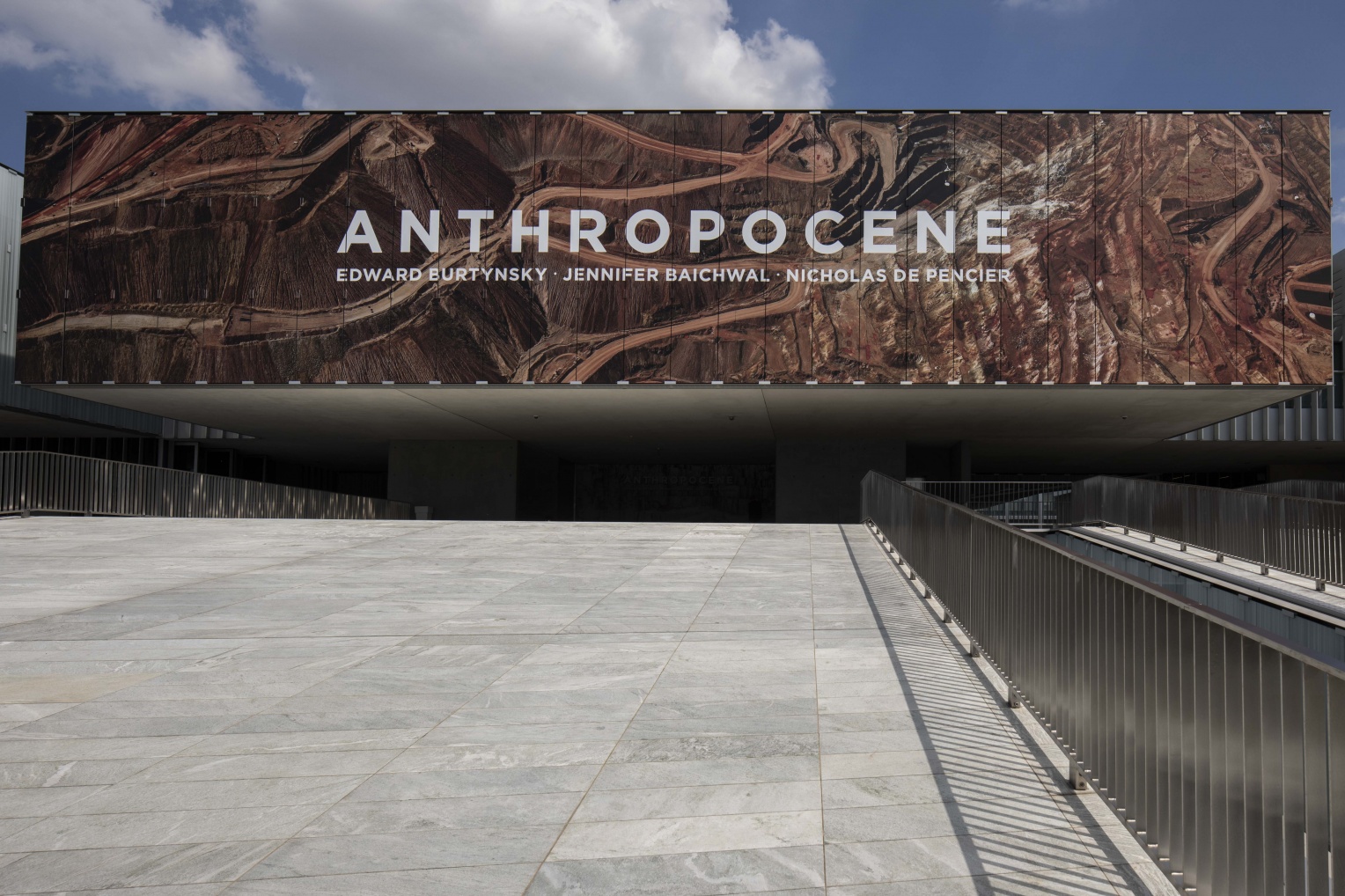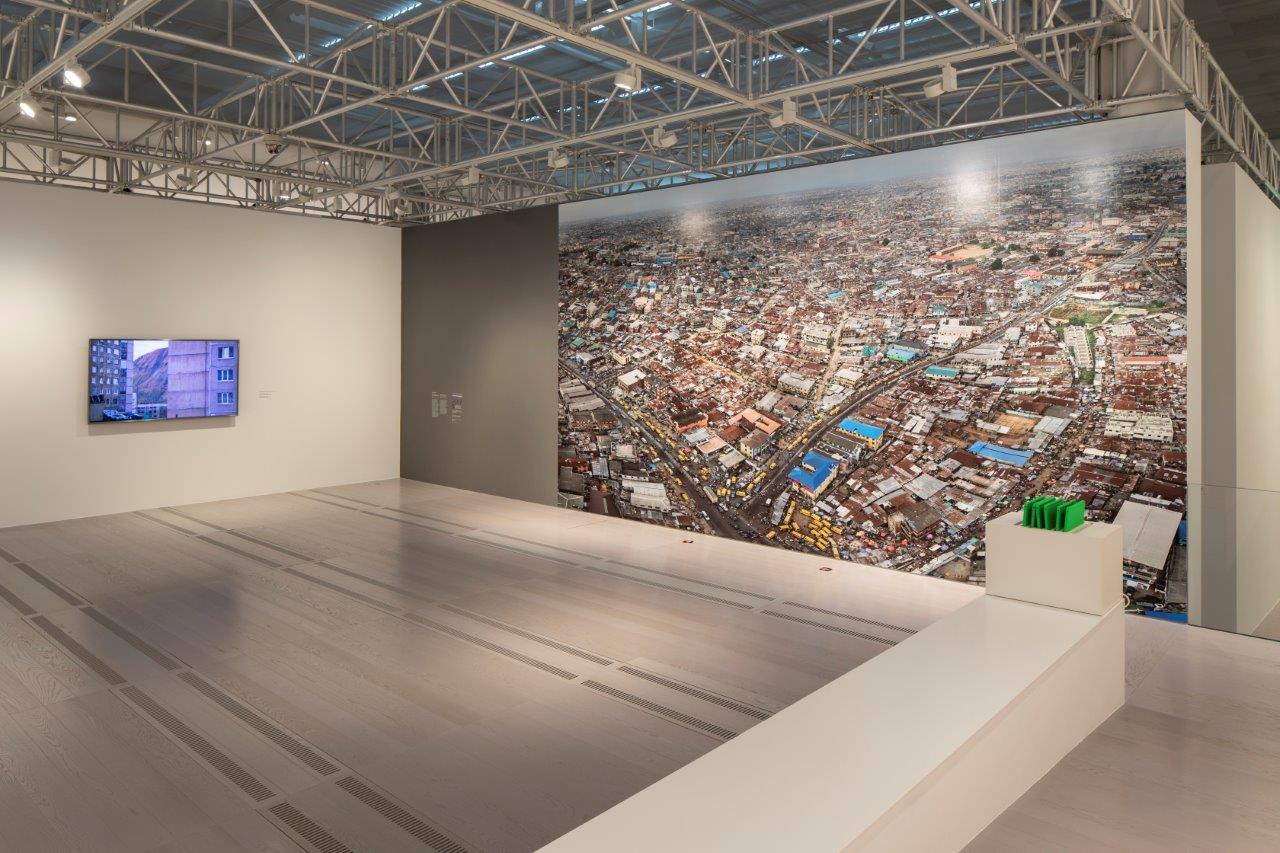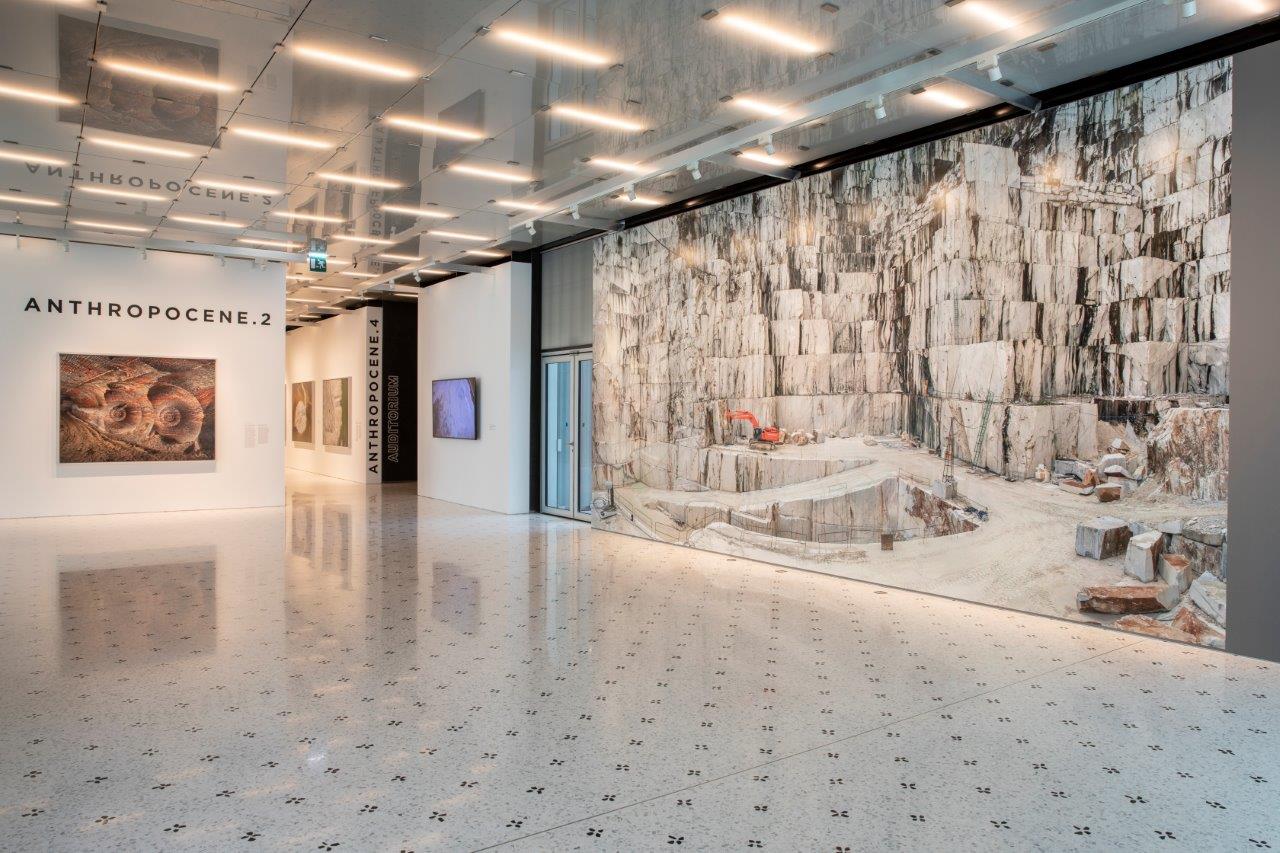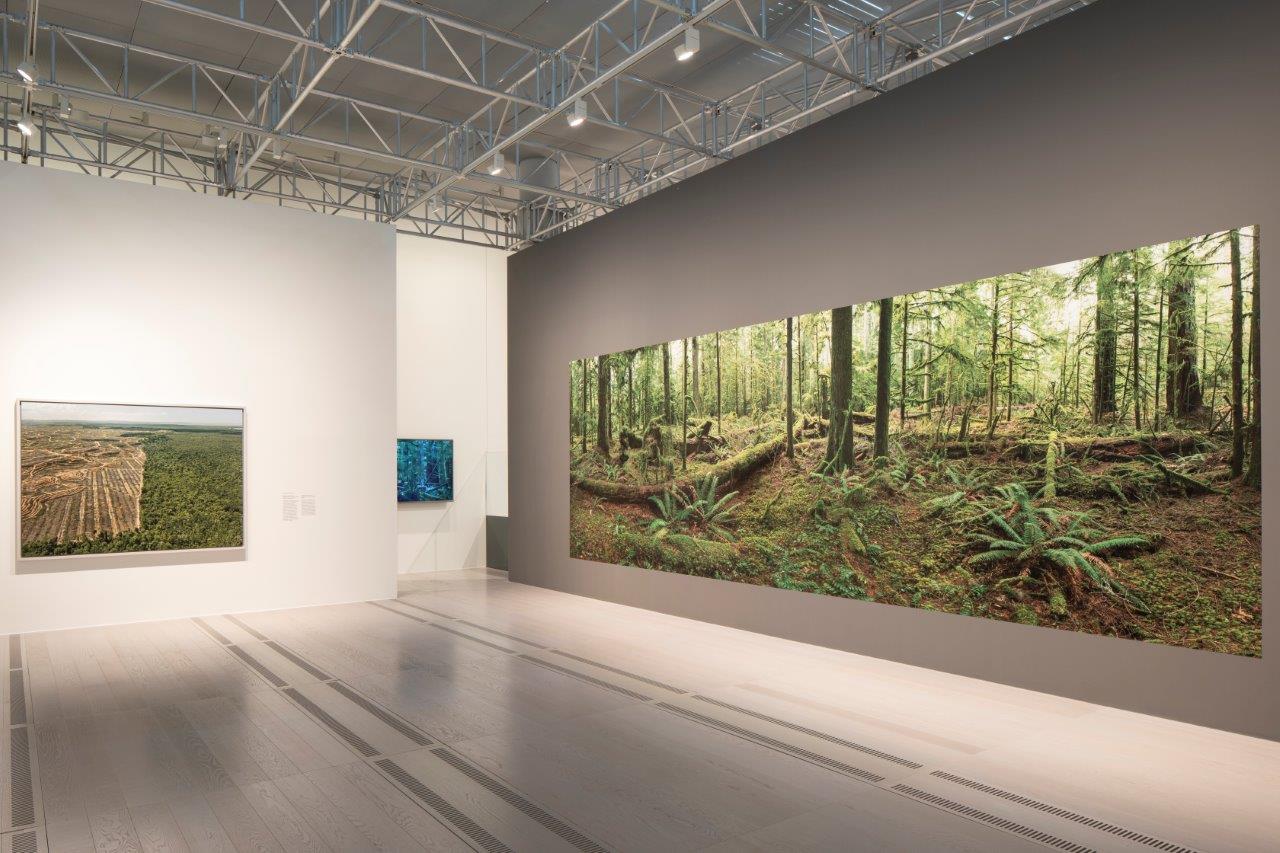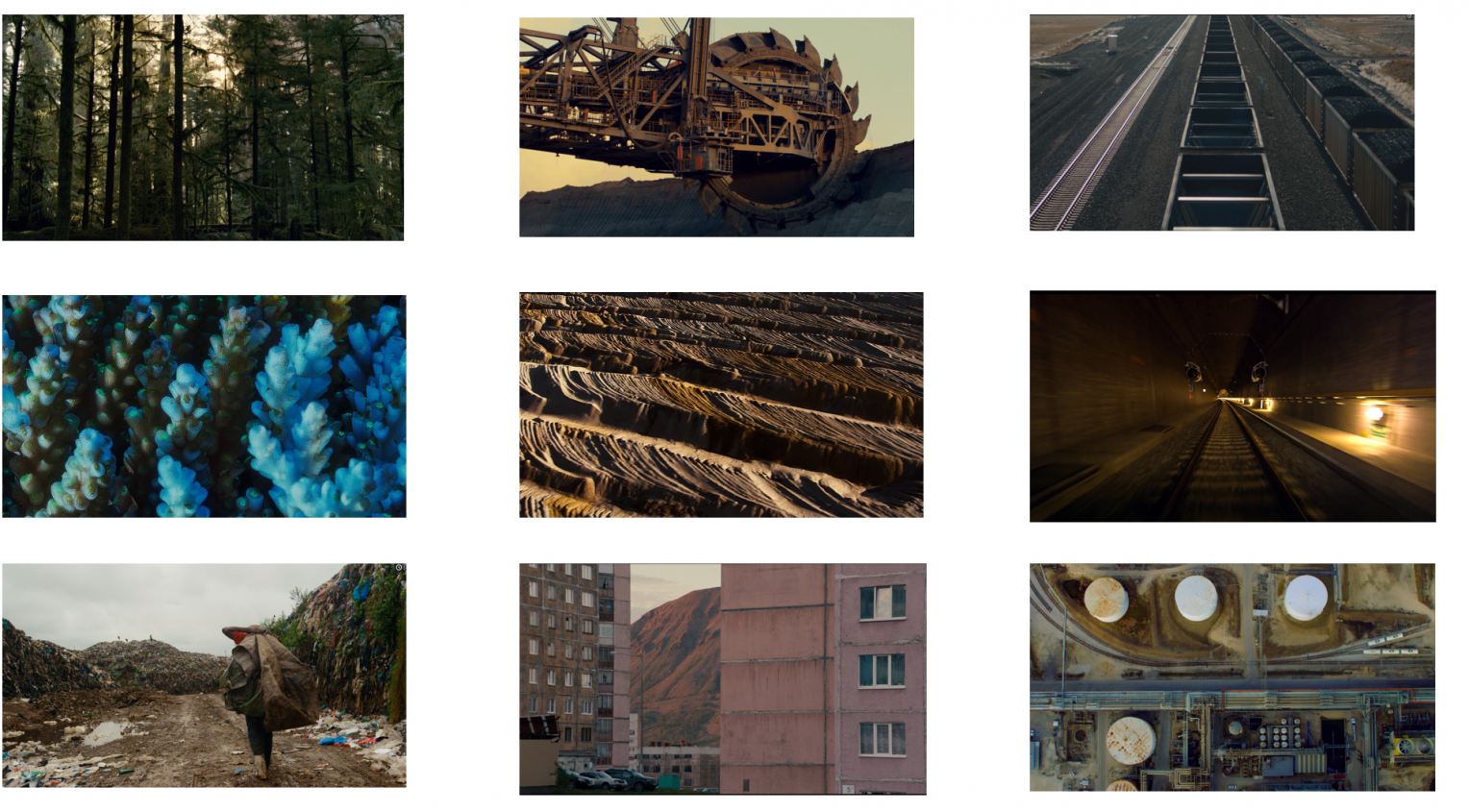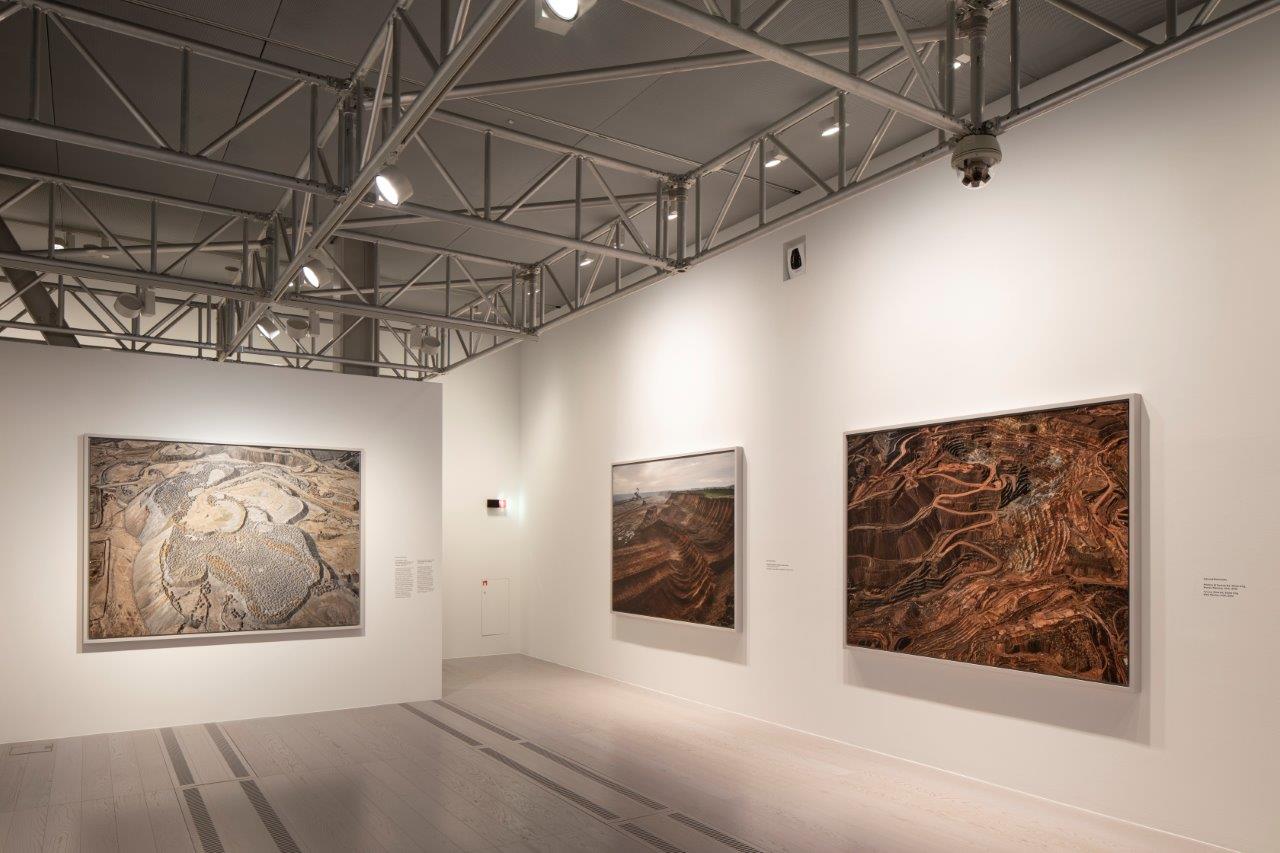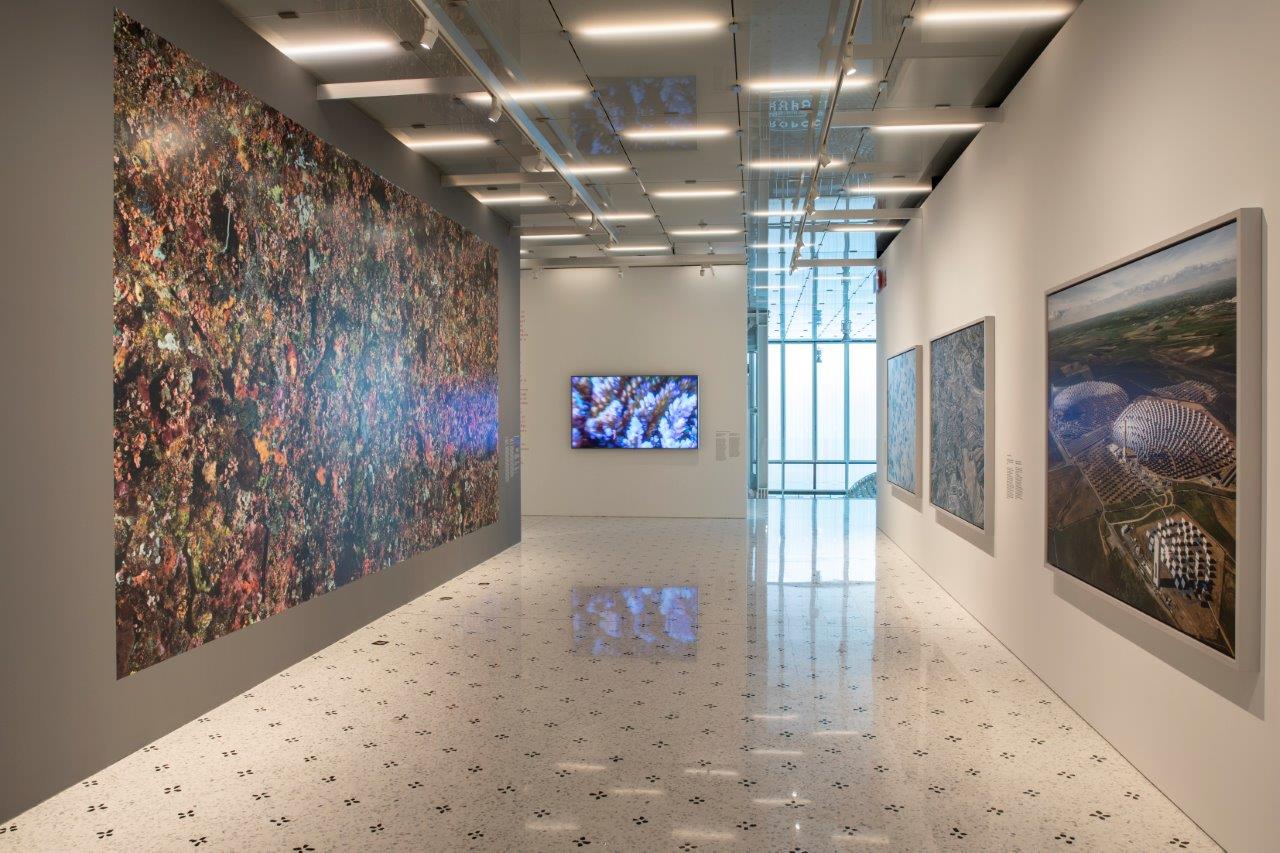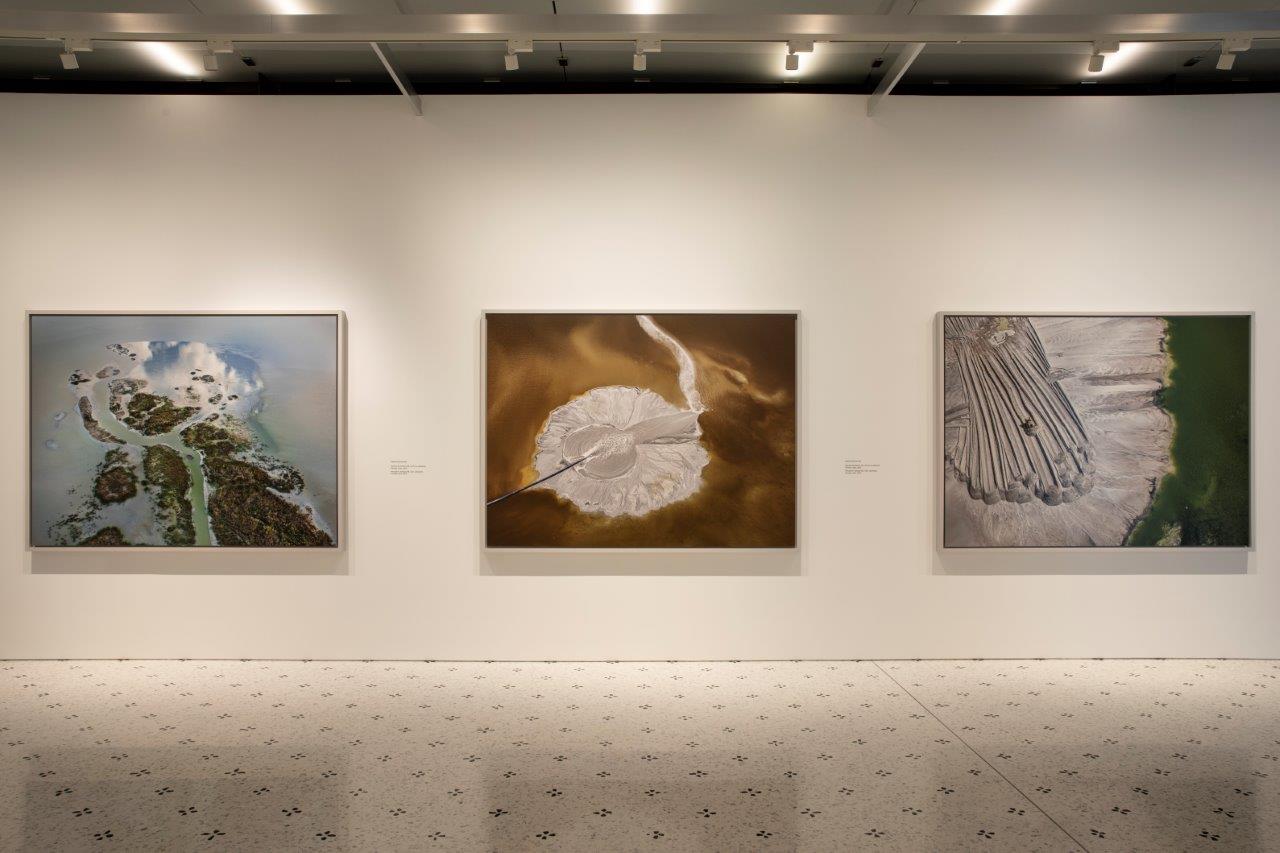Collaboration with AGO in Toronto and National Gallery of Canada in Ottawa.
Curated by Sophy Hackett, Andrea Kunard, Urs Stahel (in Bologna).
We human beings have been influencing the planet since time immemorial, or at least since we became settled and began practising agriculture. With the advent of industrialization, some 250 years ago, this influence has acquired an increasingly powerful force and scope. Since then we have been pouring ever-growing amounts of CO2 into the atmosphere. We move earth, stones, and sediments. We drill into mountains, exploiting every available and useful resource of coal, oil, gas, phosphate, and rare earth elements. We develop new materials such as concrete, aluminium and plastic (and new energy sources with the splitting of the atom) that pollute our planet, our air, our seas and that we find in the food chain in the form of micro-particles. We massively pillage the animal and plant worlds. Every year, we fish approximately 80 million tons of fish from the seas and raise another approximate 80 million tons in fish farms; we transform pigs, chickens, sheep, cattle into livestock and are constantly increasing the productivity index on large industrial farms. Industrial agriculture also intensifies productivity each year by resorting to the intensive use of ever-newer families of pesticides. Our behaviour causes the acidification of the oceans, raises the average annual temperature on the planet and severely limits the reproduction of many animal species (including bees and insects) to the point of putting their survival at risk. There is practically no living organism on Earth that is not forced to suffer the consequences of human behaviour.
Two thousand years ago, between 200 and 300 million human beings lived on Earth. The first billion was reached around 1800, the second billion in the early 1900s. The last billion was reached in only 12 years. Today, there are approximately 7.6 billion people on the planet. The enormous increase in the human population and the speed at which it reproduces brings humanity itself, and the nature in which and with which we live, face to face with problems of exceptional magnitude. It is no coincidence that climate change is a recurring theme in the media. To describe this phenomenon, scientists have coined the term Anthropocene. This concept suggests that the enormous impact exerted by the human being — from Homo Sapiens — on the planet, has reached such staggering proportions in recent decades that it is comparable, if not even greater in force and scope, to the transformations undergone during the Earth’s previous geological epochs. While the geological reality of the Anthropocene epoch remains up for debate, the immense scope and complexity of the influence that humankind exerts on the Earth, is not. This changes everything, and forever.
Edward Burtynsky (photographer), Jennifer Baichwal (filmmaker) and Nicholas de Pencier (filmmaker) have been working together for years. While working on the documentary Watermark (2013), the three artists wondered, “What if we could make “Anthropocene a commonly understood word?" We are extremely proud to present here at the MAST this important, vast, and multidisciplinary exhibition.

